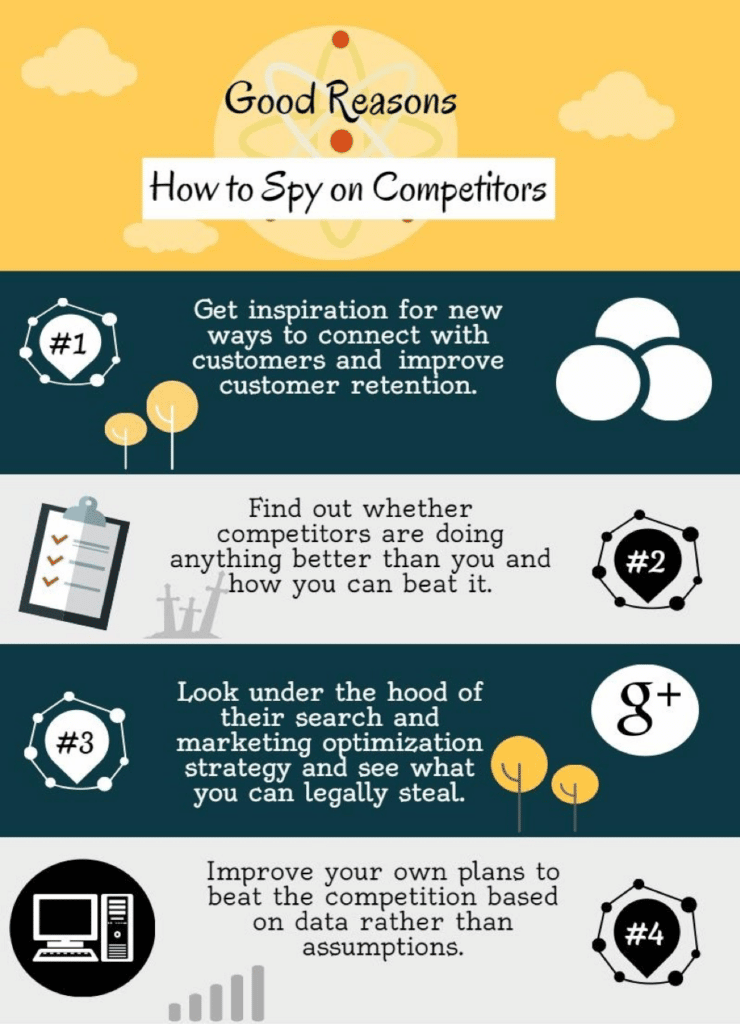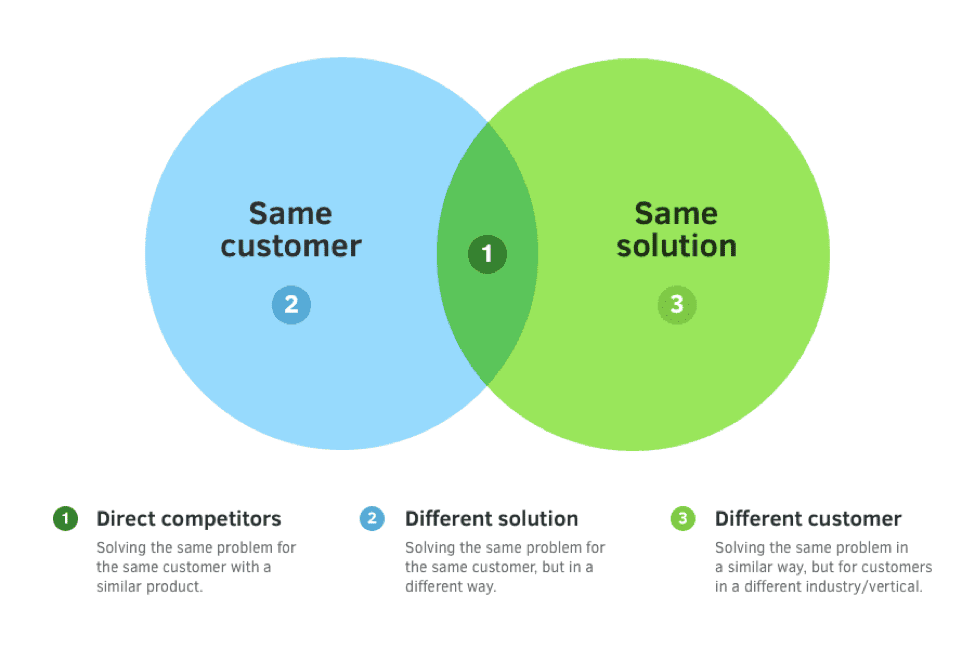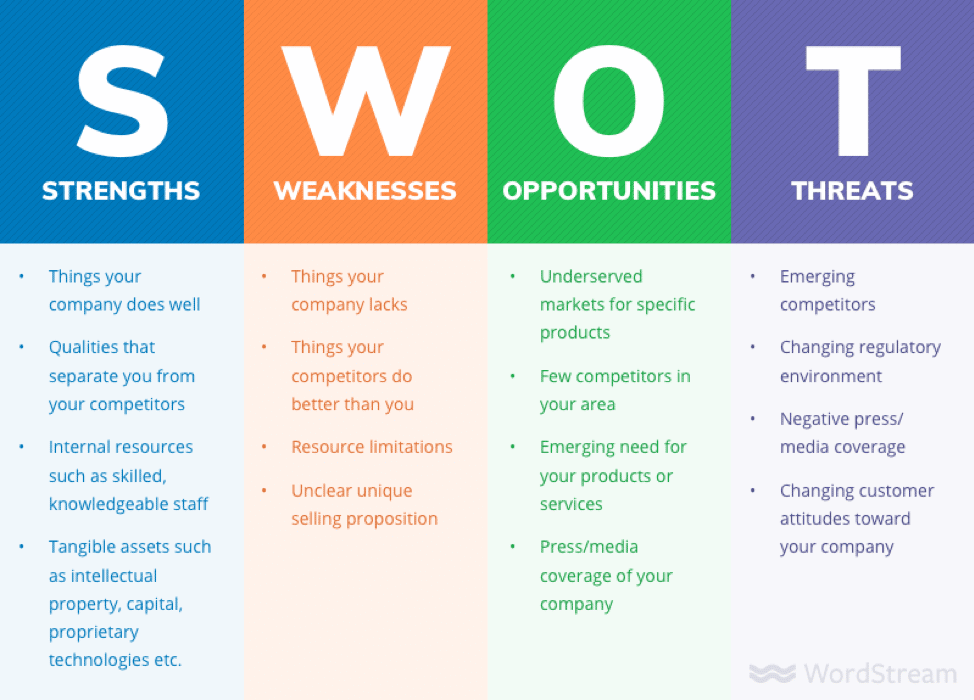Unless you’re selling drinking glasses made out of old baby bottles, chances are you’re going to have some competition in your market — and that’s a good thing. Competition means you have a product or service that people need and is worth selling in the first place. Plus, it pushes you to innovate, differentiate, and deliver the best service to your customers to continue gaining steam in the industry.
But if you want to give your business a fighting chance to succeed above your competitors, it’s important to understand what your competition is doing and find opportunities to take the lead. One of the key aspects to doing a competitive analysis is also making sure that you see what types of messaging is already working so you can find ways to capitalize on that as well.
This is what I refer to as a competitive analysis — a methodical approach to collecting intelligence on the competition so you can better inform your own strategy.
Why You Need a Competitive Analysis
Knowing how your competition acts and thinks can have a major impact on your own business. If you’re competing for the same market share, you need to know how they’re acquiring business and what you might be able to do to win some of your own.

Source
When conducted the right way, your analysis can help you find potential gaps in the market and create new products or services to fill them. In doing so, you can make your marketing more effective and potentially stay ahead of your competitors (or at the very least, have a greater ability to shift faster when they change up their strategy).
Entrepreneurs agonize over how they can differentiate their service or product offering, and a competitive analysis is arguably your best opportunity. By identifying holes or weaknesses in your competitors’ strategies, you can better tailor your own strategy to pick up where they leave off.
Today’s technology has made it easier than ever to do intelligent recon on the competition and collect trustworthy data. Let’s look at what’s involved in the process and how you can conduct your own competitor’s analysis like a pro.
Discover Your Competitors and What They Offer
First things first: you need to understand who is and who isn’t your competition. There are two types of competitors:
Direct competitors are the businesses who offer a similar product AND cater to the same audience as you do. When they’re compared side by side to your business, customers could choose one or the other to fill the same need.
Indirect competitors are those that provide different products to fill the same need as you do. As a general rule, you’ll want to focus only on your direct competitors when doing a competitor analysis.
For example, a Mexican restaurant and a Chinese restaurant can be viewed as indirect competitors: they’re competing for business among people who eat out, but at the same time, they serve uniquely different consumer tastes.
An example of direct competition is Hubspot and Salesforce. They both sell CRM solutions and sales automation, and even though their interfaces and features are slightly different, they’re ultimately competing for roughly the same audience.

One caveat worth mentioning: indirect competitors can quickly become direct competitors. For example, if a company started a new product line that competes with yours, then you might need to analyze their techniques to stay ahead of them.
Analyze Their Sales and Marketing Techniques
Sales and marketing strategies can vary greatly by company. And while you won’t be privy to some of this information, there’s a lot you can find out about a company’s processes through online research. Here are a few key places to start:
Observe Their Social Media Presence
Businesses are increasingly ramping up social media efforts to grow their brands and win more sales. But simply being on social media doesn’t mean their marketing is working. Here are some things you can look for to gauge their social success:
- Social proof and user engagement: Are people commenting on and sharing posts?
- Following: Do they seem to have a large following?
- Posting: Do they post frequently and is their content current?
- Paid ads: Are they running ads on social media?
- Platforms: What social media platforms are they (actively) using?
Monitor Their SEO Performance
SEO is essential for organic traffic and gaining visibility online. Tools like SEMRush and Ahrefs allow you to conduct effective competitor research. Look for the following points:
- Keywords: What keywords are they ranking for and how well do they rank in search?
- Backlinks: How many backlinks do they have and where are they coming from?
- SEO Structure: Pay attention to their URL architecture, use of H1s and H2s, internal linking, keyword usage and placement, sitemap, and image alt text.
- Content: Do they have a blog, lead magnets, or other content to enhance SEO and drive traffic?
Additional Insights
Aside from social media and SEO, pay close attention to the following:
- How do they market their products? (e.g. types of content, paid ads, social media, events, etc.)
- What can you learn about their sales funnel?
- Are they published in guest blogs or other publications?
- Do they have press releases?
- How do people engage with their content?
- Are they engaged in strategic partnerships to reach different audiences?
Conduct a SWOT Analysis
The last step is to combine all of the data you collected and turn it into a SWOT analysis. A SWOT analysis looks at the competitor’s strengths, weaknesses, opportunities, and threats to help you identify ways to differentiate your product offering. \

As you start comparing these elements to your own, you can see how your business stacks up and better inform your own position for success.
Conducting a competitor analysis can take some time and effort, but if it means giving your business the best chance of success, you’ll find it’s worth every ounce of energy you spend.
Final Thoughts
A competitive analysis should help you further understand the marketplace, the opportunities and gaps at hand. From there, you can develop a working strategy that is flexible enough to adapt to changes that might be needed and always stay true to your brand and what you’re trying to achieve.
Make sure you don’t get too bogged down with what competitors are doing either. Doing so can distract your focus from executing initiatives that will yield a positive return for your company.
Again, keeping a pulse on your competitors means that you use the data to help you best understand what works, what doesn’t, and how you can best position your products/services.






One Response